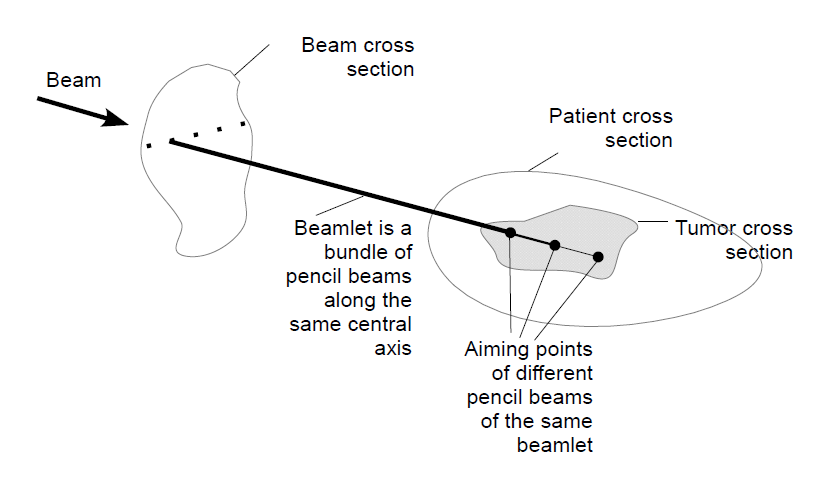Researcher: Prof. Yair Censor
Background
Proton therapy is an advanced form of radiation therapy that uses protons instead of x-rays to destroy cancer cells. Protons can be accelerated to high speeds not far from the speed of light and deposit most of their energy just before they stop, for example, deep in the body, a phenomenon known as Bragg peak (named after William Henry Bragg who discovered it in 1903). This is quite different from x-rays, still most commonly applied in radiation therapy, which deposit an exponentially decreasing amount of energy as a function of tissue penetration depth. As such, with proton therapy one can achieve highest doses at any desired depth, unlike x-ray radiation therapy where the highest dose is from single beams and is always close to the surface. Advanced versions of x-ray and proton therapy utilize many small beams, called beamlets for x-rays and pencil beams for protons. These small beams vary in intensity (they are modulated) to create the dose pattern prescribed by the radiation oncologist, with the purpose of delivering a homogeneous, high dose to the tumor and reduced doses to surrounding normal tissues. This technique, intensity modulated radiation therapy (IMRT) for x-rays and intensity modulated proton therapy (IMPT) for protons, evolved during the 1990s. A mathematical solution of beamlet or pencil beam intensities that leads to acceptable (feasible) dose distribution solves the inverse treatment-planning problem. In 1988, Censor, Altschuler, and Powlis presented the first mathematical algorithm to solve the fully-discretized inverse problem in IMRT. For proton therapy, the same mathematical principles apply, but the solution of an inverse IMPT planning problem is more complex and requires more computer power. Modern proton radiation therapy utilizes actively scanned pencil beams. With the introduction of single-room solutions, it is growing at a rapid pace. Finding efficient mathematical algorithms that can solve the inverse problem in IMRT and IMPT is a very active field of research.
Intensity-Modulated Proton Therapy for Precisely Targeted Cancer Therapy
In modern intensity modulated proton therapy, a large number of actively scanned proton pencil beams reach the tumor and require adjustment of location, depth, and intensity. Finding the right intensity for each of the beams is an intricate mathematical problem and its solution requires advanced mathematical algorithms.
Prof. Yair Censor of the University of Haifa’s Department of Mathematics, in collaboration with Prof. Reinhard Schulte, a physician scientist at Loma Linda University in California, has developed an innovative mathematical solution method to solve the inverse IMPT planning problem. In practice, the solutions found are most beneficial when one needs to sculpt the dose away from nearby critical organs at risk without compromising the dose to the tumor. This is a common problem when doctors use proton or ion therapy to treat tumors in the brain and the head and neck region.
Research Status
Dr. Censor and his collaborators, experts in computer science and proton therapy, have developed advanced mathematical algorithms to find superior solutions for inverse planning of IMPT and IMRT. One recent development has been to find solutions that allow prescribed under or overdosing of certain dose regions (tumors and organs at risk), specified in clinical trial protocols. Currently they work on methods that deliver solutions that are more homogeneous in dose for individual regions and are more robust to delivery uncertainties such as proton range errors. Another area of recent work is to utilize the benefit of reduced range uncertainty and the possibility to image moving targets with particle imaging techniques for finding better planning solutions for IMPT in challenging cases. In a recent collaboration, with the Heidelberg Ion Therapy (HIT) center we are working on using our algorithms to create carbon ion beams of uniform biological effectiveness using simulated information on the formation of clustered ionization depositions in nanometric, DNA-like cylindrical volumes.
IP Status
US patent granted – Intensity Modulated Proton Therapy (US 9,220,920 B2)
Related pages
Yair Censor, Prof. - Researcher page
Proton Imaging for Improving Proton Radiation Therapy


